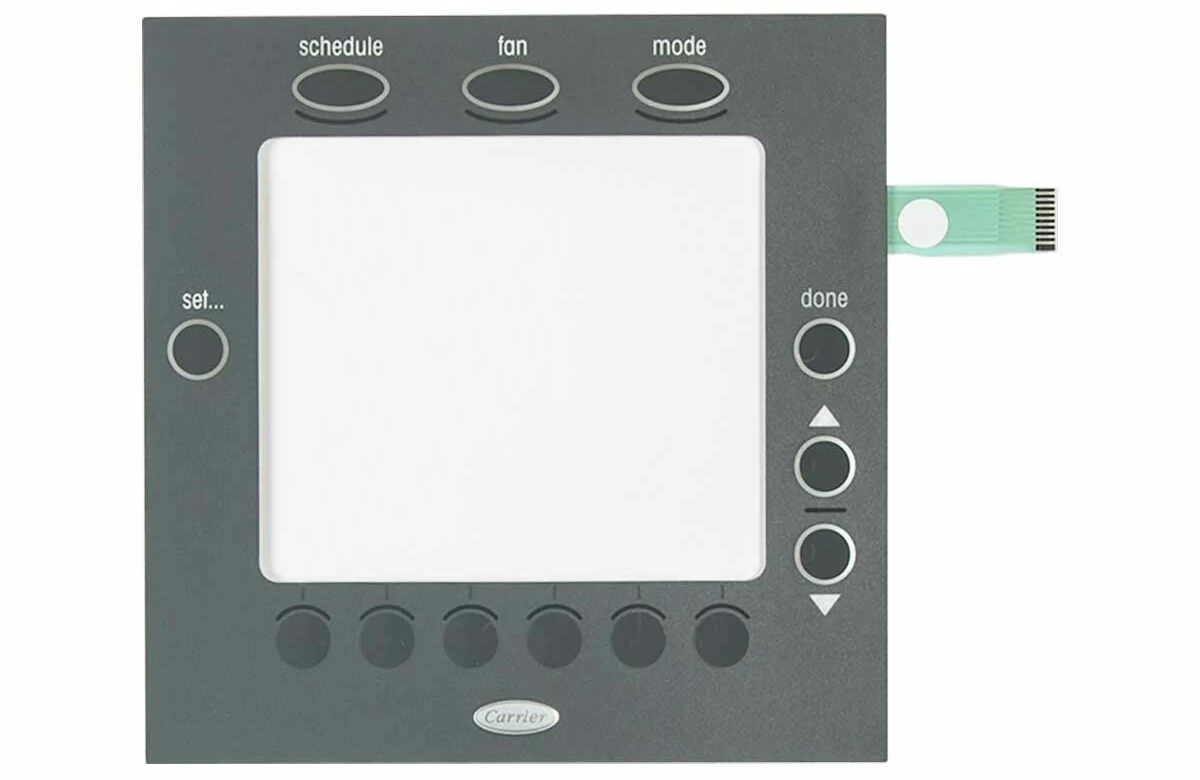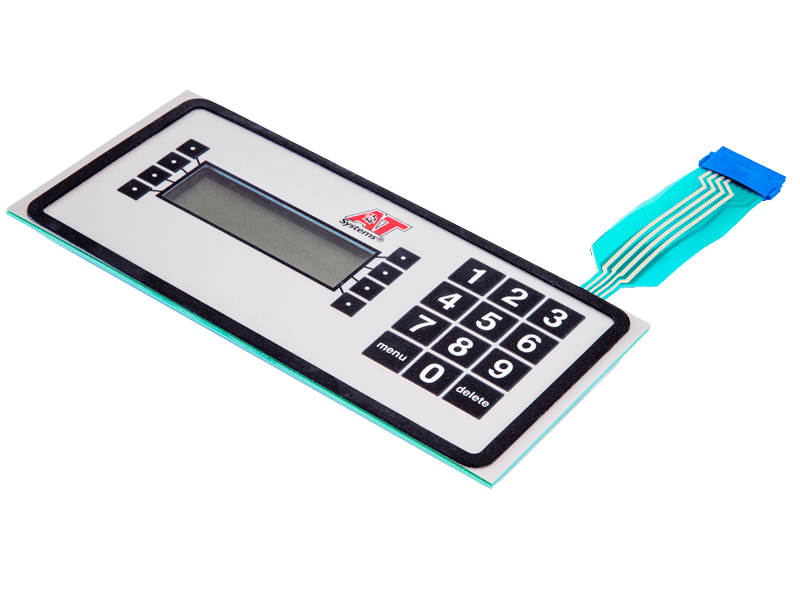A Comprehensive Guide to Membrane Switches for Product Designers
A Comprehensive Guide to Membrane Switches for Product Designers
Blog Article
Comprehending the Significance of Membrane Switches in Interface
Membrane buttons are integral parts in the layout of efficient customer interfaces, assisting in not just capability but additionally enhancing aesthetic allure and user communication. As we check out the future fads and different advantages linked with Membrane modern technology, it becomes clear that these buttons are more than just parts; they represent a convergence of advancement and usefulness.
What Are Membrane Buttons?

The spacer layer, which consists of glue buildings, permits the separation of the circuit layer from the overlay, making certain that the button continues to be in a non-activated state till pushed. When pressure is put on the overlay, it presses the spacer layer, connecting the space and completing the circuit in the underlying layer. This design not only decreases the physical room needed for traditional mechanical switches yet also enhances the longevity of the device, as Membrane switches are usually resistant to dirt, moisture, and various other environmental aspects.
Commonly discovered in applications ranging from consumer electronic devices to medical devices, Membrane switches are indispensable to modern-day technology, offering a straightforward and reliable user interface that lines up with modern design requirements.
Benefits of Membrane Buttons
While countless button modern technologies exist, Membrane Switches deal unique advantages that make them specifically desirable in different applications. One of the key benefits of Membrane switches is their compact layout, which allows for space-saving applications in tools where real estate is restricted. Their slim account not just boosts visual appeal yet likewise assists in light-weight building and construction.
Another significant benefit is their resistance to ecological factors. Membrane switches are typically secured against moisture, dirt, and pollutants, making them excellent for usage sought after atmospheres, such as medical devices and commercial devices. This resilience prolongs the life expectancy of the switch, minimizing upkeep prices and enhancing integrity.
Moreover, Membrane switches can be tailored to fulfill particular style requirements, including unique graphics and colors that enhance individual interaction. Their responsive feedback options can likewise be tailored to give a gratifying individual experience. In addition, Membrane switches are economical, particularly in high-volume applications, as they can be generated efficiently.
Applications in Various Industries

In the customer electronics industry, Membrane switches are common in gadgets such as microwaves, cleaning machines, and push-button controls. Their responsive responses and visual choices improve user experience while offering a sleek, modern appearance. Additionally, automotive producers use Membrane switches in dashboard controls and infomercial systems, where room is limited, and user engagement is vital.
Additionally, the industrial field leverages Membrane buttons in control panels for machinery and equipment, enabling for instinctive procedure in usually extreme environments. Their resistance to chemicals and moisture makes sure long life and dependability in these applications. Overall, the flexibility of Membrane Switches adds substantially to their prevalent use, making them indispensable in different technical domains.
Design Considerations for Membrane Buttons

When developing Membrane switches, a number of essential considerations have to be considered to guarantee ideal performance and individual experience. Firstly, the option of materials is essential; choosing durable, top quality substratums can boost the button's durability and resistance to environmental variables such as dampness and temperature changes.
Second of all, the design of the visuals overlay should prioritize quality and ease of website link use. Icons and text need to be understandable, and the format needs to facilitate user-friendly interaction (membrane switches). In addition, responsive feedback is vital; incorporating a responsive dome or various other systems can boost the customer experience by offering physical confirmation of activation
Another crucial aspect is the switch's electric efficiency. Developers need to make certain that the conductive traces are appropriately created to minimize resistance and prevent signal interference. This includes examining the needed actuation pressure and guaranteeing compatibility with the digital components they will user interface with.

Future Trends in Membrane Innovation
As technology remains to advancement, Membrane switches are positioned to progress substantially, driven by advancements in materials and producing strategies. One arising pattern is the unification of sophisticated products, such as conductive inks and versatile substratums, which enhance durability and minimize the total weight of Membrane buttons. These materials not just improve the tactile response however additionally enable for the design of switches that can withstand harsher ecological conditions.
In addition, the assimilation of touch-sensitive innovations is changing typical Membrane Switches right into even more interactive interface. Capacitive touch sensing units installed within Membrane switch panels can offer a much more instinctive and responsive user experience, straightening with the expanding need for sleek, modern layouts in consumer electronic devices.
Furthermore, improvements in printing methods, such as digital and 3D printing, enable fast prototyping and personalization of Membrane buttons. This adaptability permits manufacturers to respond faster to market needs and consumer preferences.
Lastly, sustainability is ending up being a substantial emphasis, with manufacturers discovering eco-friendly products and procedures. As these patterns unravel, the future of Membrane modern technology promises enhanced performance, visual appeal, and ecological duty, strengthening their role in innovative individual interfaces throughout different sectors.
Final Thought
In final thought, Membrane Switches represent a crucial component in the layout of user interfaces, incorporating functionality with visual flexibility. As advancements in innovation continue, the development of Membrane buttons is anticipated to further improve customer interfaces, driving development and enhancing functionality in a significantly complicated technological web link landscape.
Membrane buttons are indispensable parts in the design of effective individual interfaces, facilitating not just capability but likewise improving visual allure and customer interaction.Membrane Switches serve as an essential element in various customer interfaces, assisting in a smooth communication between individuals and digital gadgets.While many button technologies exist, Membrane Switches deal unique benefits that make them specifically desirable in various Get the facts applications.Moreover, Membrane switches can be customized to fulfill certain design demands, incorporating distinct graphics and colors that improve individual communication.In conclusion, Membrane Switches stand for a crucial part in the layout of user interfaces, incorporating functionality with visual adaptability.
Report this page